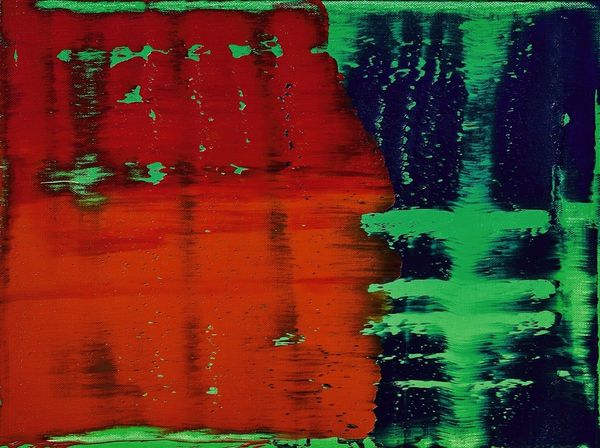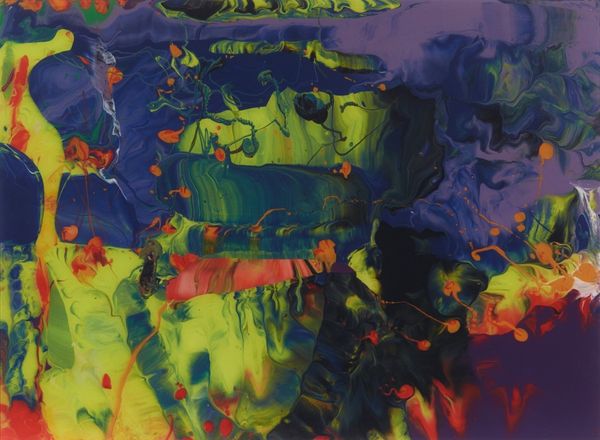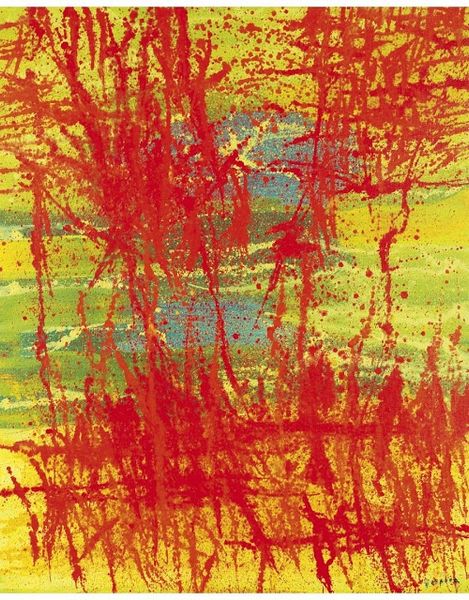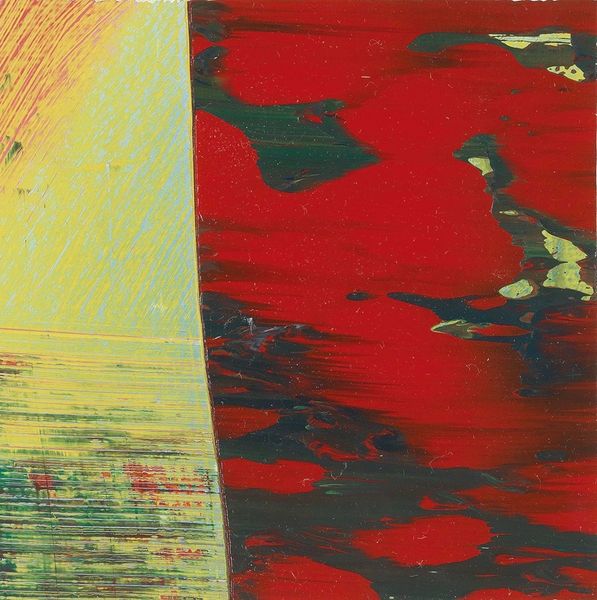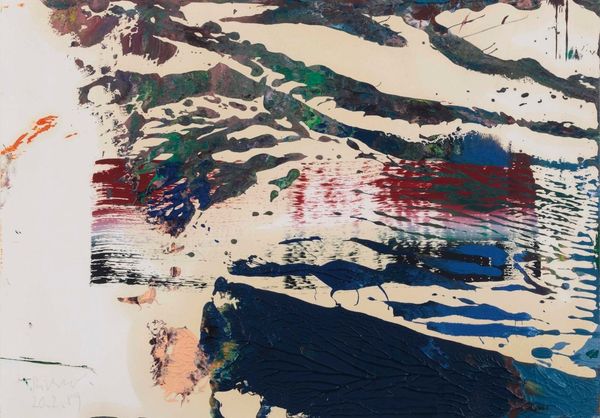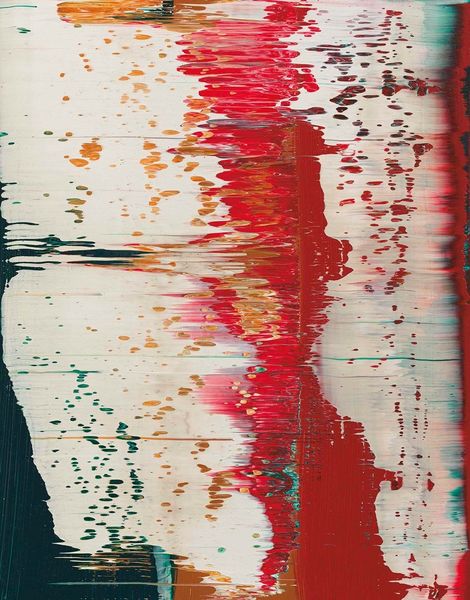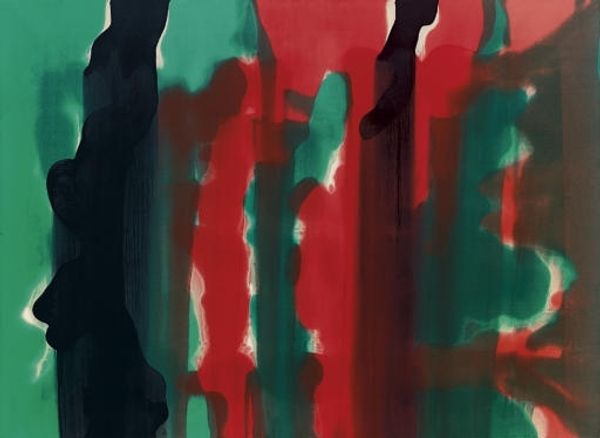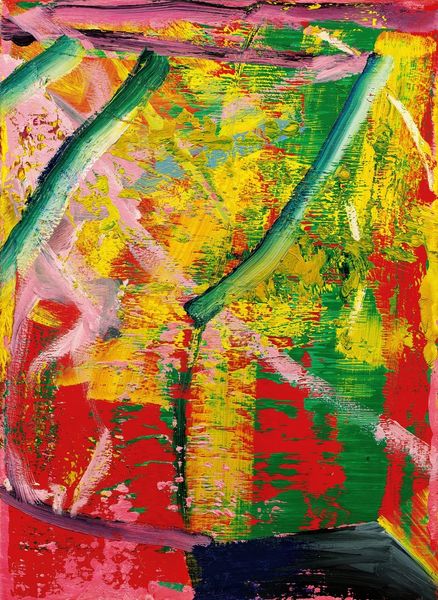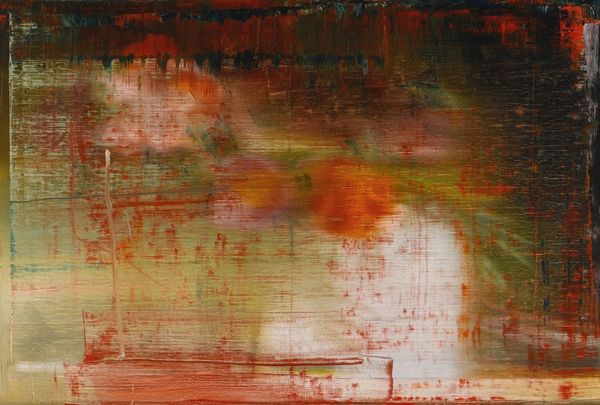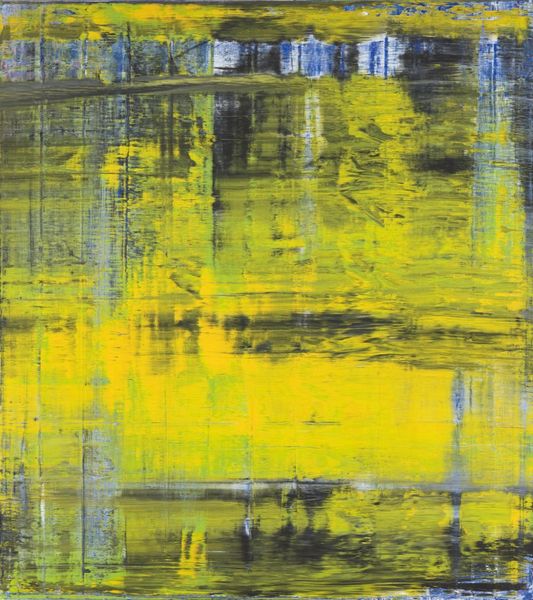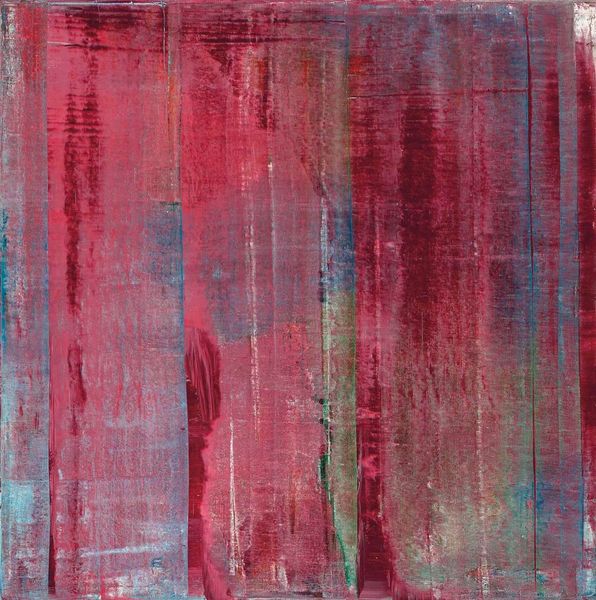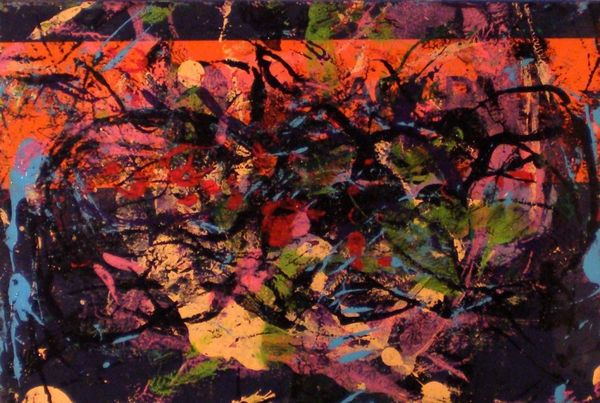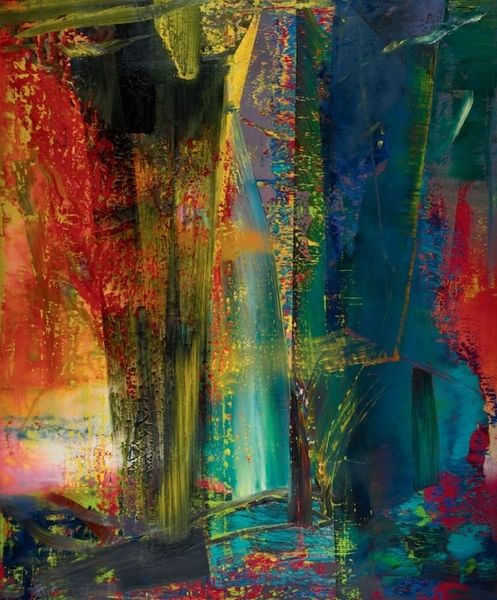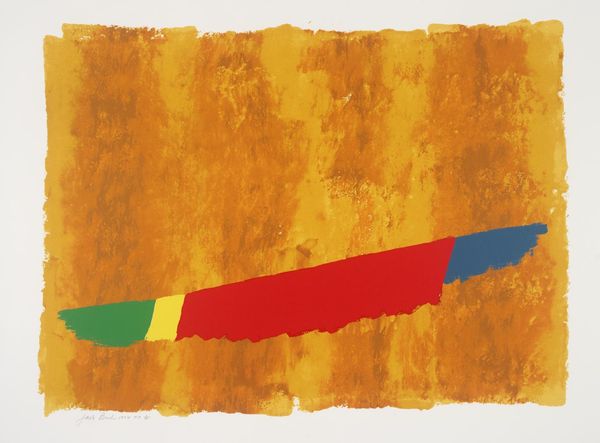
capitalist-realism
Copyright: Modern Artists: Artvee
Curator: So, we're looking at Gerhard Richter's "Grün-Blau-Rot" from 1993, executed in acrylic paint. Editor: Yes! It’s a pretty small canvas, and those intensely layered colours, especially the smeared effect of the red against the blue and green… it's quite striking. What do you see in it? Curator: What interests me is the evidence of its making. You see how Richter manipulates the paint, dragging it across the surface? This wasn't about some grand artistic gesture but a very physical process. Look at the material reality: the texture of the canvas, the viscosity of the paint, and the way each color interacts and partially obscures the others. Editor: I hadn’t considered the physicality of it so much, I was mostly focused on how the colors worked together to create a certain mood. Curator: Think about the implications. Is he rejecting the idea of the artist as a singular genius, and instead highlighting the process, the labor of creation, the material conditions? German Expressionism always seems to imply emotionality. How does that play here, considering his detachment and methodology? Editor: It’s almost like he's making us aware of the manufacturing, in a way, deconstructing what painting even means... By showcasing the paint as a tangible substance rather than a representation of something else? Curator: Precisely. And this act of material exploration is itself a statement, isn't it? How does it stand in contrast to older art practices that valorized technique above all? Editor: I see now. It moves beyond personal expression and engages with the industrial nature of art production itself. I appreciate it more knowing that perspective! Curator: Indeed! And it's in that very tension, between gesture and manufactured-look aesthetic, that Richter provokes us. There is so much tied into labor, material choices and modes of production here.
Comments
No comments
Be the first to comment and join the conversation on the ultimate creative platform.
